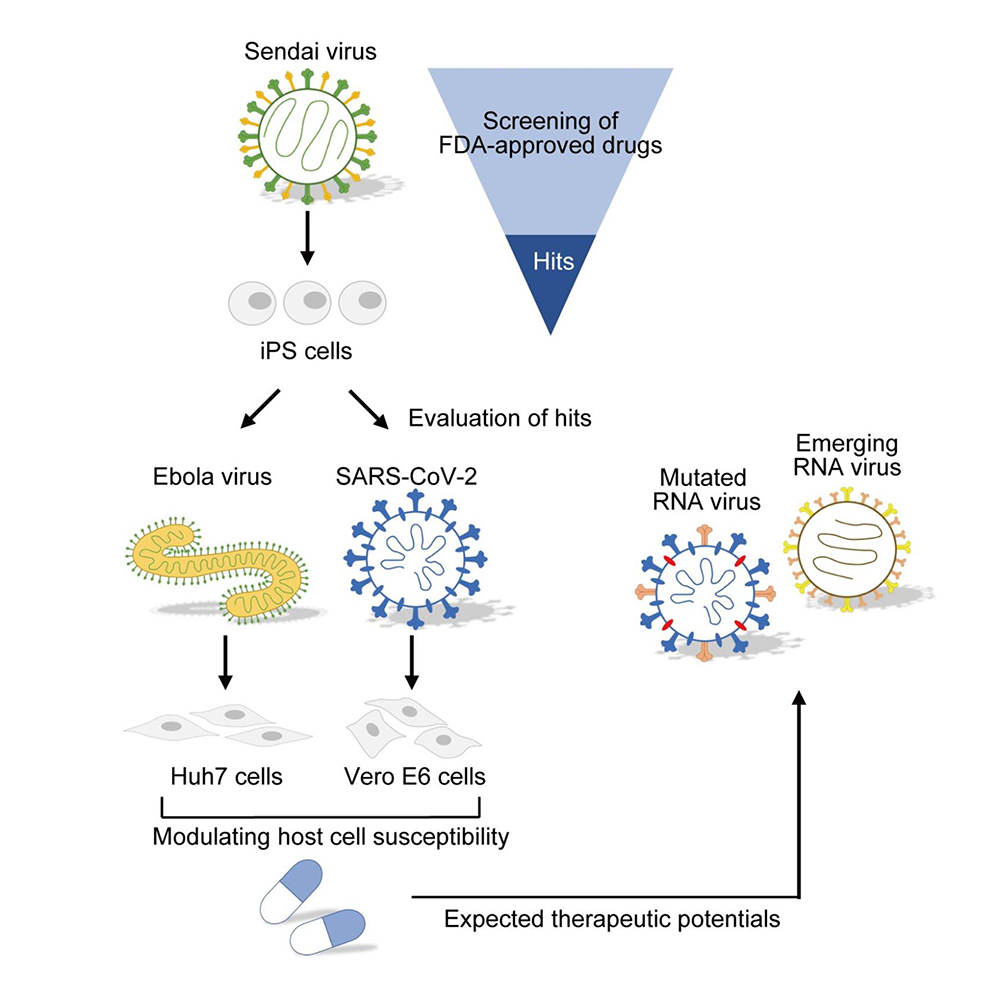
COVID-19: Kyoto University discovers new corona drug candidate: raloxifene and pioglitazone
-Discover new corona drug candidates through iPS cell research-
Kyoto University and Nagasaki University:
The research team announced that they have “developed a method for finding treatment candidates for new coronavirus infections using iPS cells.”
We narrowed down from “existing medicines used for other diseases”.
Osteoporosis medicine and
Drugs that lower blood sugar, etc.
It is said that it may work.
Therapeutic agents for new corona infections:
Searching for effective drugs in each country.
In Japan:
Becklely (generic name Remdesivir) and
Dexamethasone has been approved.
At WHO:
Meanwhile, the World Health Organization has expressed a “negative view on the effects of Bekleley.”
The search for effective drugs continues around the world.
Utilizing human iPS cells:
The research team drugged and investigated human iPS cells.
We focused on “new coronavirus and Sendai virus, which has the same gene type”.
This time, we investigated whether the invasion of this Sendai virus could be prevented.
As a result, the method for determining the effect of the drug was clarified.
Raloxifene and pioglitazone:
We surveyed 500 existing drugs.
Osteoporosis drug Evista (generic name raloxifene) and
It was found that the hypoglycemic drug Actos (generic name pioglitazone) is highly effective.
Confirmed infection prevention effect:
In fact, we conducted an experiment to infect cells with the new coronavirus.
For these medicines. It was confirmed that it has the effect of preventing infection.
Asahi Shimbun Digital
https://www.asahi.com/articles/ASP464HD7P42PLBJ008.html
Identification of existing drugs that inhibit RNA virus infection
-A drug that suppresses infection by desensitizing host cells to multiple different RNA viruses-
CiRA | Center for iPS Cell Research and Application, Kyoto University
https://www.cira.kyoto-u.ac.jp/j/pressrelease/news/210407-000000.html
CiRA | Center for iPS Cell Research and Application, Kyoto University
https://www.cira.kyoto-u.ac.jp/e/index.html
iPSC screening for drug repurposing identifies anti‐RNA virus agents modulating host cell susceptibility
iPSC screening for drug repurposing identifies anti‐RNA virus agents modulating host cell susceptibility
Keiko Imamura Yasuteru Sakurai Takako Enami Ran Shibukawa Yohei Nishi … See all authors First published: 06 April 2021
– FEBS Open Bio – Wiley Online Library
Abstract
Human pathogenic RNA viruses are threats to public health
because they are prone to escaping the human immune system through mutations of genomic RNA, thereby causing local outbreaks and global pandemics of emerging or re‐emerging viral diseases.
While specific therapeutics and vaccines
are being developed, a broad‐spectrum therapeutic agent for RNA viruseswould be beneficial for targeting newly emerging and mutated RNA viruses.
In this study,
we conducted a screen of repurposed drugs using Sendai virus (an RNA virus of the family Paramyxoviridae),with human‐induced pluripotent stem cells (iPSCs) to explore existing drugs that may present anti‐RNA viral activity.
Selected hit compounds
were evaluated for their efficacy against two important human pathogens:
Ebola virus (EBOV) using Huh7 cells
and severe acute respiratory syndrome coronavirus 2 (SARS‐CoV‐2) using Vero E6 cells.
Selective estrogen receptor modulators (SERMs), including raloxifene,
exhibited antiviral activities against EBOV and SARS‐CoV‐2.
Pioglitazone, a PPARγ agonist, also exhibited antiviral activities against SARS‐CoV‐2,
and both raloxifene and pioglitazone presented a synergistic antiviral effect.
Finally,
we demonstrated that SERMs blocked entry steps of SARS‐CoV‐2 into host cells.These findings suggest that
the identified FDA‐approved drugs can modulate host cell susceptibility against RNA viruses.
Abbreviations
DAPI 4’6‐diamidino‐2‐phenylindole
EBOV Ebola virus
EGFP enhanced green fluorescent protein iPSCs induced pluripotent stem cells
MOI multiplicity of infection
SARS‐CoV‐2 severe acute respiratory syndrome coronavirus 2
SERMs selective estrogen receptor modulators
VSV vesicular stomatitis virus
ZIP zero interaction potency
https://febs.onlinelibrary.wiley.com/doi/10.1002/2211-5463.13153